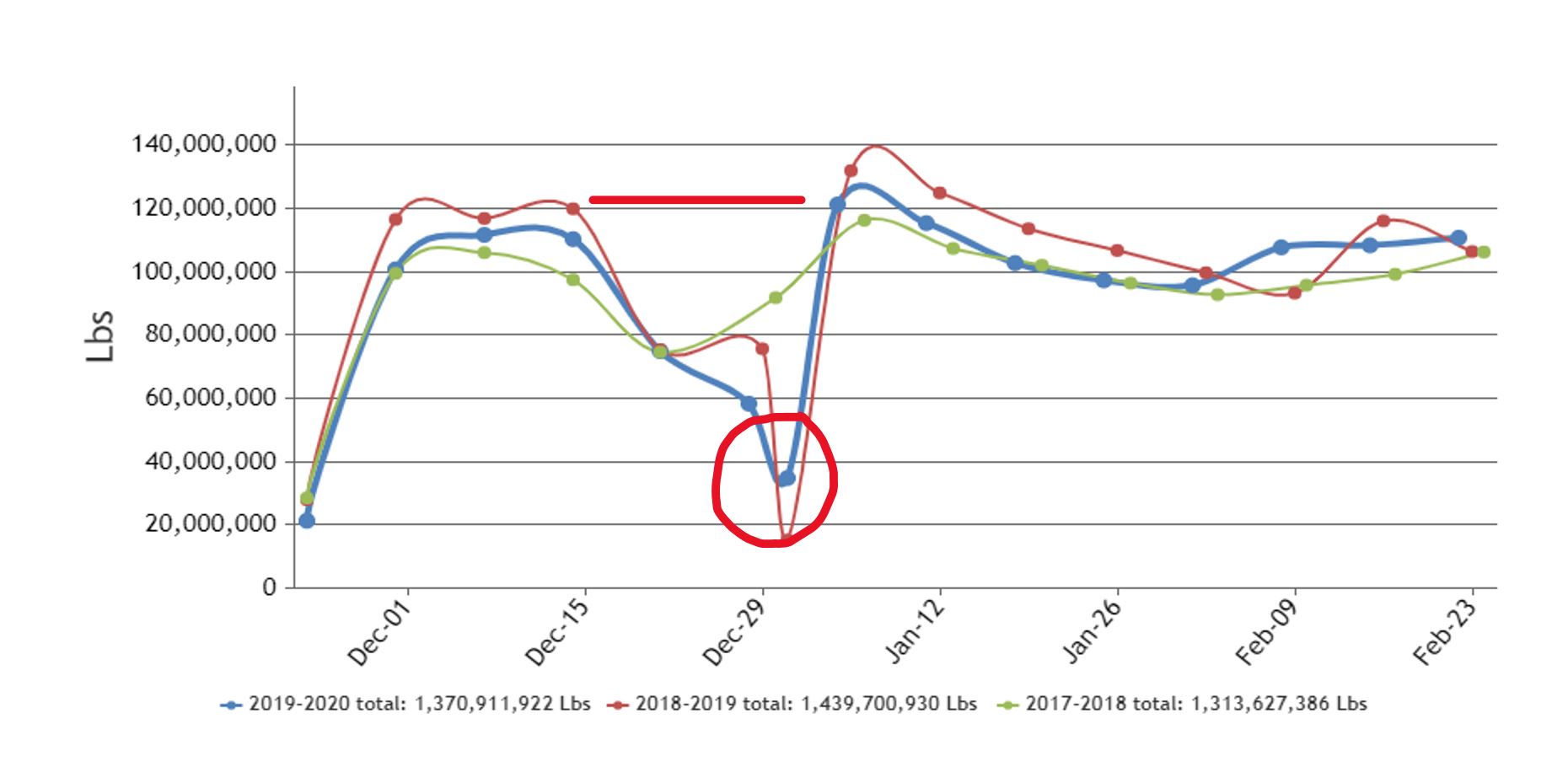There has been nothing steady about 2020 when it comes to produce, and onions were not immune to the pandemic this year.
Multiple farmers had to bury millions of pounds of onions when foodservice business shut down and are hoping for a brighter future in 2021.
While the USDA Food Box program has helped and foodservice continues to slowly increase, a lack of available freight from the Northwest is a major concern right now and something to keep an eye on.
Last winter saw a similar occurrence in the pre-pandemic days as the year prior. A volume drop at the turn of the year led to a price spike, which could give us some insight on what to expect this winter.
Blue Book has teamed with Agtools Inc., BB #:355102 the data analytic service for the produce industry, to look how a fruit or vegetable fared in 2020 and what it should expect next year.
Looking back to look ahead, we concentrate on the upcoming 3 months of supply. Once again, 70% of the volume is coming from WA, ID & OR, while Peruvian supplies become more prevalent. Comparing the last three years of volume during this time, we also see a consistent dip around mid-December through the beginning of January.
Onion volume Dec. 2019-Feb. 2020
To further highlight this pattern, look at shipping F.O.B.s for 50-pound sacks of yellow onions during this time frame. For this particular graph, we focused in on a medium size onion in the bag and compared F.O.B. patterns from two different growing regions that cover WA, ID and OR. A noticeable spike in F.O.B. follows the consistent drop in volume and covers most of January before settling back.

F.O.B. Washington 50-pound sacks, Medium Dec 2019-Feb 2020
F.O.B. Idaho-E. Oregon 50-pound sacks, Medium Dec 2019-Feb 2020
With volume dropping and F.O.B.s rising, what happens at the retail level? Since onions are one of the most profitable items in the store, not much.
A little spike can be seen towards the end of the year, but by that time, the money has been made and prices settle in once again. We can see this pattern on 3-pound yellow onions in the Southeast and Northeast regions.
While Washington, Idaho and Oregon are known for apples, pears and potatoes, the vast majority of onion volume comes from the same region.
In 2020, this region has made up over 50 percent of the total volume with Washington leading the way.
Overall volume for the year is steady when compared to the previous two years. The only noticeable change comes around the time of the pandemic with a quick spike/decline/spike in volume before steadying the ship.










